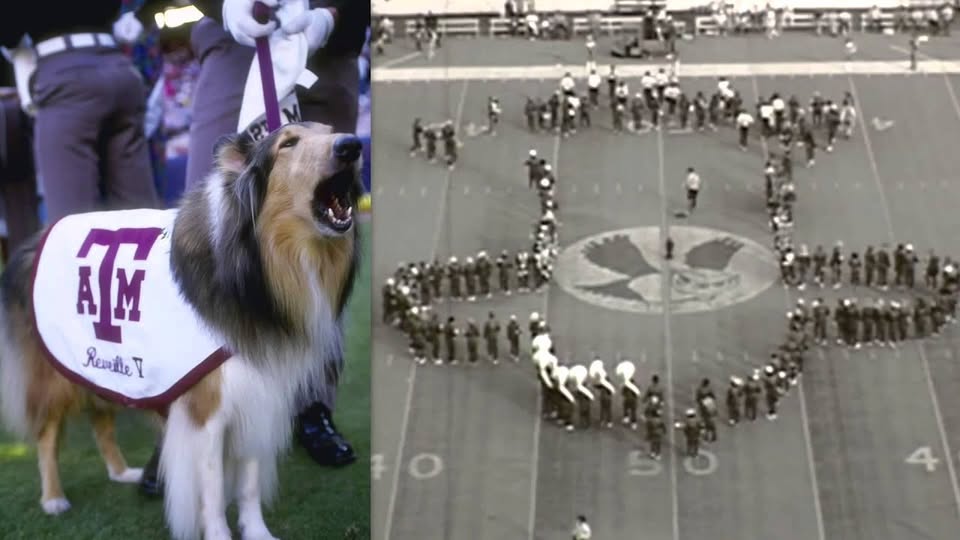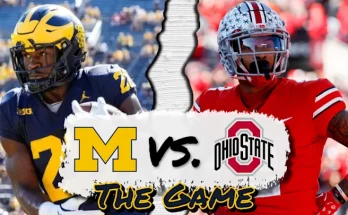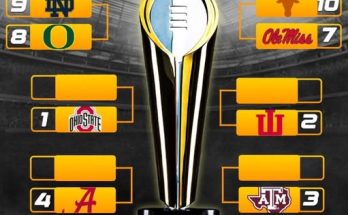In the annals of college football rivalries, few moments stand out quite like the bizarre and unforgettable incident that occurred in 1973 when Texas A&M fans took the Rice University Marching Band hostage during halftime. This episode, deeply rooted in the fierce rivalry and school spirit that define college athletics in Texas, remains a vivid testament to the passion—and sometimes the recklessness—that college football can inspire. It was an event that not only shocked spectators but also became a legendary story passed down among Aggie faithful, a tale of pride, provocation, and an extraordinary response born out of a strong sense of identity and tradition.
The backdrop to this unusual confrontation was a regular season football game between Texas A&M University and Rice University, two institutions with long-standing athletic programs and spirited followings. Texas A&M, known for its deep-rooted traditions, especially its reverence for its mascot, Reveille, faced off against Rice University, whose marching band is known as the Mighty Owl Band. While the football game itself was important, the halftime show often serves as an extension of rivalry on the field—a chance for each school to display pride through their band’s performances. However, in this instance, the halftime show would become a flashpoint, a moment where school spirit and rivalry crossed an unexpected line.
The catalyst for the entire event was the Rice Marching Band’s halftime performance, which involved a series of mocking gestures directed at Reveille, Texas A&M’s beloved mascot. Reveille, a collie dog, is more than just a mascot at Texas A&M; she is a revered figure and holds a near-sacred status among Aggies. To insult Reveille was to insult the very heart of Texas A&M tradition and pride. It was a gesture that did not sit well with the Aggie fans, known for their fierce loyalty and protective attitude toward their symbols and customs.
As the Rice band took the field, they performed a routine that, while clever in its showmanship, deliberately poked fun at Reveille. The specific details of the routine involved caricatures and exaggerated actions that suggested disrespect, a provocation that Texas A&M fans perceived as unacceptable. The mocking was not merely playful rivalry banter but a public affront that stirred emotions to a boiling point. The Aggie fans, who packed the stadium in overwhelming numbers, erupted in a mixture of disbelief, anger, and a call to action.
The reaction of the Texas A&M fans was swift and unprecedented. During the halftime performance, a contingent of Aggie supporters rushed onto the field and surrounded the Rice marching band, effectively taking them hostage. It was a chaotic scene, with the band members trapped amid a sea of furious Aggie fans. The atmosphere was charged with tension as the Aggies expressed their outrage physically by encircling the band, refusing to let them leave the field until an understanding was reached or until the insult was acknowledged. The incident, captured by news outlets and remembered vividly by those who witnessed it, became an instant legend in Aggie lore.
The reasons behind such an extreme reaction were deeply embedded in the culture of Texas A&M. The university has long fostered a unique and intense school spirit that revolves around honor, tradition, and loyalty. Reveille, as the official mascot, is a living symbol of these values, and any mockery of her was viewed as a personal attack on the Aggie family. For Texas A&M fans, traditions are not mere formalities but form the core of their identity. The mascot, the Corps of Cadets, the Aggie War Hymn, and other customs intertwine to create a powerful collective pride. To witness Reveille being mocked was to feel a direct challenge to that identity, demanding a strong, immediate response.
In the aftermath of the incident, reactions varied widely. Among Texas A&M fans and alumni, there was a strong sense of justification. Many believed that the Rice band’s performance crossed a line that should not be tolerated in the spirit of collegiate competition. To them, the Aggie fans’ response was an act of defense—a way to protect their traditions and their pride. On the other hand, many outsiders, including neutral observers and Rice supporters, viewed the episode as an overreaction, an embarrassing display of fandom gone too far. Critics saw the event as a breakdown of sportsmanship and a failure to respect the boundaries of rivalry.
Despite the controversy, the incident became a defining moment that highlighted the deep emotions and cultural significance attached to college mascots and traditions. It underscored how sports rivalries in Texas—and indeed across the country—often transcend the game itself. These rivalries tap into identity, community, and history, sometimes sparking conflicts that are remembered long after the final whistle.
In practical terms, the hostage situation led to increased security measures at future games to prevent similar occurrences. University officials and athletic departments recognized the need to protect visiting bands and performers, ensuring that rivalry could be expressed through competition and spirited cheers without crossing into aggression or hostility. The event served as a cautionary tale and a case study in managing fan behavior, highlighting the fine line between passion and misconduct.
Over time, the story of the 1973 incident has been retold as part of Texas A&M’s rich tradition of spirited fandom. It has become a part of the Aggie narrative, a reminder of how seriously traditions are taken and the lengths to which fans will go to defend their heritage. The tale is told with a mix of pride, humor, and reflection, acknowledging both the fervor of the moment and the importance of maintaining respect and sportsmanship.
This episode also opened discussions about the role of mascots and symbols in sports culture. Mascots like Reveille are not merely decorative; they serve as rallying points for community identity and loyalty. Their treatment during games can evoke strong emotions because they represent much more than just a school symbol. The 1973 incident is a stark example of how mascots become focal points for rivalry and how deeply connected fans feel to these figures.
The story also provides insight into the nature of college marching bands and their place in sporting events. Bands are integral to the pageantry and atmosphere of college football games, offering musical entertainment and fostering school spirit. However, as the Rice band’s experience demonstrated, they can also become targets or participants in the emotional theatre of rivalry. The line between performance and provocation can be thin, and the reaction of the Aggie fans in 1973 highlighted the potential consequences when that line is crossed.
In reflection, the 1973 Texas A&M fans’ taking of the Rice Marching Band hostage is a fascinating snapshot of college sports culture in Texas. It captures the intensity of rivalry, the depth of tradition, and the sometimes unpredictable nature of fan behavior. It reminds us that while sports can unite communities, they can also stir intense emotions that lead to extraordinary—and occasionally outrageous—actions.
Today, the incident stands as a historic curiosity, a reminder of a time when school spirit and rivalry collided in a dramatic, if controversial, fashion. It offers valuable lessons about respect, the power of symbols, and the importance of balancing passion with sportsmanship. Above all, it highlights the unique and sometimes wild world of college football fandom, where the game is never just about the scoreboard but about identity, pride, and tradition carried forward by generations of students and fans.



